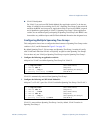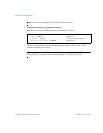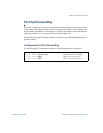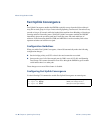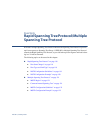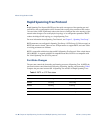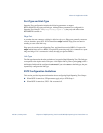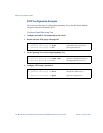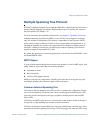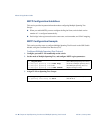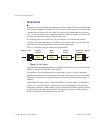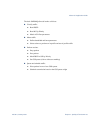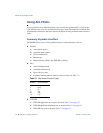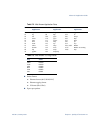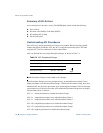
Alteon OS Application Guide
Chapter 6: Rapid Spanning Tree Protocol/Multiple Spanning Tree Protocol
12142C4911, January 2007
Multiple Spanning Tree Protocol
IEEE 802.1s Multiple Spanning Tree extends the IEEE 802.1w Rapid Spanning Tree Protocol
through multiple Spanning Tree Groups. MSTP maintains up to 32 spanning-tree instances,
that correspond to STP Groups 1-32.
For more information about Spanning Tree Protocol, see Chapter 5, “Spanning Tree Group.”
In Multiple Spanning Tree Protocol (MSTP), several VLANs can be mapped to each Span-
ning-Tree instance. Each Spanning-Tree instance is independent of other instances. MSTP
allows frames assigned to different VLANs to follow separate paths, each path based on an
independent Spanning-Tree instance. This approach provides multiple forwarding paths for
data traffic, enabling load-balancing, and reducing the number of Spanning-Tree instances
required to support a large number of VLANs.
By default, the spanning tree on the management ports is turned off in both STP/PVST+ mode
and in MSTP/RSTP mode.
MSTP Region
A group of interconnected bridges that share the same attributes is called an MST region. Each
bridge within the region must share the following attributes:
Alphanumeric name
Revision number
VLAN-to STG mapping scheme
MSTP provides rapid re-configuration, scalability and control due to the support of regions,
and multiple Spanning-Tree instances support within each region.
Common Internal Spanning Tree
The Common Internal Spanning Tree (CIST) provides a common form of Spanning Tree Pro-
tocol, with one Spanning-Tree instance that can be used throughout the MSTP region. CIST
allows the switch to interoperate with legacy equipment, including devices that run IEEE
802.1d (STP).
CIST allows the MSTP region to act as a virtual bridge to other bridges outside of the region,
and provides a single Spanning-Tree instance to interact with them.
CIST port configuration includes Hello time, Edge port enable/disable, and Link Type. These
parameters do not affect Spanning Tree Groups 1-128. They apply only when the CIST is used.



